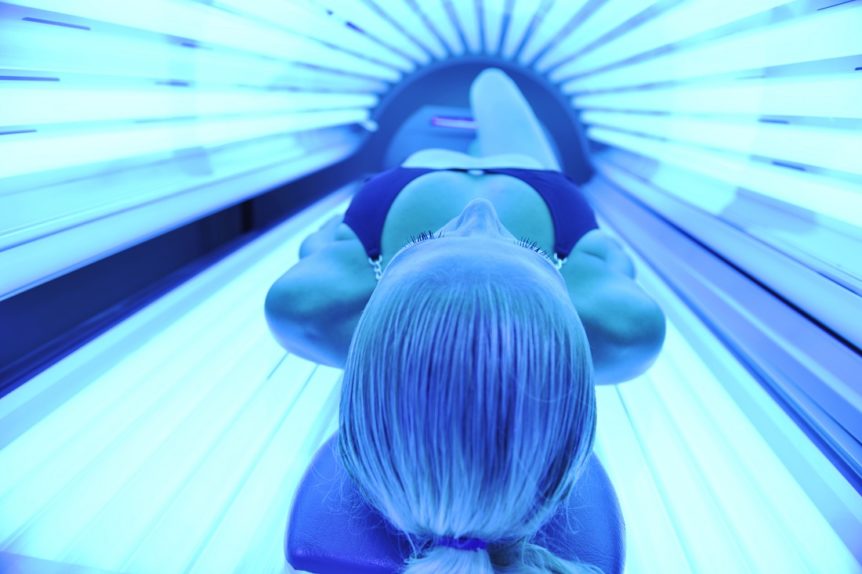Every great civilization has had an unwavering reverence for the sun. It has played a central role in religion, mythology, medicine, and as a sign of socioeconomic status. In the early 1900’s, a tan was considered a sign that someone was a field laborer or of low class.
With the industrial revolution, however, there was a shift of the labor force from the fields to factories, leading to a reversal of the association between skin color and class implication. The June 22, 1929 Vogue featured an interview with the fashion icon Coco Chanel, who was credited with single-handedly sparking the tanning craze across the Western World after she was photographed on the Duke of Westminster’s yacht proclaiming that ‘‘the 1929 girl must be tanned… A golden tan is the index of chic.’’
This sent flocks of women to the beach in pursuit of the perfect tan. With time, a deep, dark tan came to symbolize wealth, free time, and well-being. With the introduction of the bikini in 1946, further loosening of the moral restrictions on exposing one’s skin in the 1960s, and the burgeoning movie industry in Southern California, modern tanning culture was here to stay.
Fifty years later, a drive around Anytown, USA clearly reveals that the tanning culture continues to be deeply entrenched in our society. In the United States, the tanning industry generates over $5 billion annually, with indoor tanning facilities located in almost every mall and on every corner.
There are few causal relationships in medicine that are more established than ultraviolet light and the development of skin cancer. Whether we study cells in a laboratory, animals, or people, it is clear that UV contributes directly to the development of skin cancer, including melanoma, and the rates of all forms of skin cancer are dramatically on the rise.
Melanoma is the fastest growing cancer among young women, and until recently, it was only suspected but never proven that indoor tanning played a role.
Recently, the British Medical Journal published a report that reviewed 27 previous studies looking at the relationship between indoor tanning and the development of melanoma and solidified this association. Those who tanned more had a greater risk of developing melanoma, and this was most significant in patients who started tanning under age 35.
Studies like this one and others have been raising attention of government agencies. At present, over 35 states have age restrictions on tanning and some have an absolute age restriction (ranging from 13 to 16), while others require a parent to either be present or write a note of consent (at the majority of facilities, these notes are valid for 1 year). New York State is among the recent states to join amongst these ranks.
On July 16, 2012, Governor Cuomo signed into law a bill that prohibits the use of indoor tanning by anyone under the age of 17. Tanners between the ages of 17 and 18 are required to provide tanning salons with a signature from a parent or guardian granting permission for them to tan.
Previous to the new law, teens between the ages of 14 and 18 were allowed to tan indoors only with the written permission from a parent or legal guardian. Now, almost ten years later, rates of skin cancer continue to rise and teens continue to tan.
While increased awareness and new legislation are important first steps in reducing the damage that eventually leads to skin cancer, enforcement of these laws and penalty for their violation is effectively nonexistent.
Well-designed medical studies have shown that up to 88% of tanning businesses illegally allowed minors to tan without parental consent. In one study 90% of centers allowed clients with extremely fair skin to tan and 75% of these facilities provided reassurance of the safety of tanning to these customers.
Sixteen percent of Texas facilities charged for eyewear despite state regulation mandating that it be provided free of charge (although this may be insignificant because up to 40% of teenagers admit to not using eyewear at all). Approximately 75% of indoor tanning advertisements promote unlimited tanning, 95% allow customers with these packages to tan as frequently as desired, and 100% offer unlimited tanning packages.
Unfortunately, this advertising is becoming increasingly marketed to adolescents via high school newspapers. Sixteen percent of frequent tanners had more than 100 sessions per year, and the recommended exposure limits as stated by the FDA were exceeded by 95% of patrons.
So, while we as dermatologists applaud the first steps towards teen tanning bans, the real responsibility lies with parents. Educating your teens about the risks of tanning, leading by example with good sun-protective behavior, supporting sunless tanning, and starting these behaviors early are but a few of the things that can help.

